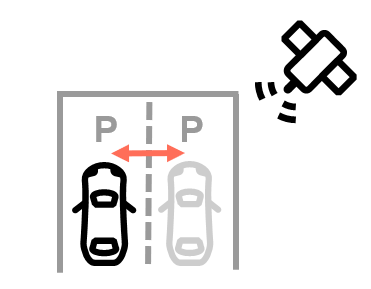
- Support portal
- Evaluation Kits and partner products
u-blox Support
- Product documentation
Documentation
- Investor relations
Investor relations
Tech
|
20 Nov 2020
Low power consumption, small size, maximum performance. u-blox’s tenth generation of GNSS technology meets the demanding needs of tomorrow’s GPS trackers and wearable devices.

| u-blox is holding a webinar on cloud-based positioning delivering power autonomy to your asset-tracking application. This will be held in conjunction with Digi-Key on Thursday, April 6th. For more information please click here |
In case you missed it, we just announced u-blox M10, our tenth generation GNSS technology platform. Needless to say, we’re excited! Integrating the lessons learned over the course of two decades during which we sold half a billion GNSS receivers, the u-blox M10 platform represents a major step forward in terms of size and power consumption of our standard precision GNSS receiver offering. Packed into a four-by-four-millimeter quad-flat no-leads (QFN) package and running on under 15 mW in continuous tracking mode, its size, performance, and power consumption make u-blox M10 an ideal fit for a wide range of size-constrained devices across a broad spectrum of industrial and consumer use cases.
Find out how CloudLocate can give your u-blox M10 10X energy savings vs. standalone GNSS.
Click the button below to request a 3-month free trial*
*Offer applies to new Thingstream accounts only.
Let’s take a closer look at some of the use cases that u-blox M10 is tailored to: sports watches, handheld devices, pet and kid trackers, logistic goods trackers, and automotive trackers. Each application is subject to a particular set of interdependent size, performance, and power constraints, which we will explore in more detail here.
Take the GNSS receiver’s update rate. As a device increases its position update rate, increased computational demand draws more power from its battery, decreasing power autonomy. Similarly, small devices are commonly powered by small batteries, again negatively affecting power autonomy. Small GNSS antennas also negatively affect positioning performance, as does poor antenna placement. And devices that continually compensate for movements, a common feature of wearable and handheld devices, tend to suffer from reduced positioning accuracy.
|
Target application constraints |
Sports watch |
Handheld device |
Pet/kids tracker |
Logistic goods tracker |
Automotive tracker |
|
Update rate |
1 / s |
5 / min |
1 / min |
1 / day |
Up to 10 Hz |
|
Dynamics |
●●● | ●● |
●● | ● |
● |
|
Antenna |
●●● |
●● |
●● |
●● |
●● |
|
Battery |
●●● |
●● |
●● |
●●● |
● |
●●●: high constraints, ●●: medium constraints, ●: low constraints
The table above gives an overview of typical application constraints across five classes of use cases. On one end of the spectrum, we have sports watches, equipped with small antennas and batteries, that require a relatively high 1-4 Hz update rate and constantly compensate for being in motion. Logistic goods trackers, on the other end of the spectrum, have relaxed requirements in terms of update rate and dynamics but are expected to run for months on a small battery. In between are handheld devices, your pet and kid trackers, and your battery-powered logistic goods trackers.
Because they have virtually unlimited access to power, automotive trackers do not quite fit into the pattern. That said, they typically have high requirements in terms of position update rate and, in many common designs, suffer from poor antenna placement.
What impact can a GNSS product have here? Well, it can provide certain functionalities to cope with the key constraints.
u-blox M10 is designed to meet the needs of each of the above-mentioned use cases.
|
Impact factor |
u-blox M10 feature |
|
Update rate |
Higher rates up to 10 Hz with under 15 mW power consumption |
|
Dynamic accuracy |
Concurrent reception of four GNSS |
|
Small antenna |
Super-S technology (High sensitivity and weak antenna handling) |
|
Power consumption |
Different power save modes available depending on the update rate |
Full GNSS performance with under 15 mW power consumption in continuous tracking mode and a four-by-four-millimeter footprint makes u-blox M10 ideal for size and power-constrained devices like wearables or small battery-operated trackers.
Concurrent reception of four GNSS constellations translates to maximum position availability, even in deep urban canyons. Particularly in the case of people tracking, the position availabilitycan be most critical to achieve reliable positioning.
Super-Signal (Super-S) technology further enhances performance by increasing RF sensitivity and compensating for weak signals, caused, for example, by poor antenna placement or environmental factors such as RF-interference or reduced sky view. Drive tests showed a 25 percent improvement in speed and position accuracy for no-line-of-sight antenna placement. Use cases like shared bike trackers greatly benefit from the increased accuracy.
And having awareness of the maximum expected positioning error, the protection level, in real-time provides a benefit for applications where the position accuracy plays a significant role. Searching for a car on a parking lot or finding an e-scooter on the right area of the street and sidewalk just got a lot easier.

By quantifying the reliability of a GNSS receiver's reading, the protection level brings benefits to a wide range of use cases.
To learn more about our u-blox M10 GNSS technology platform, head over to the u-blox M10 product page or contact your nearest sales representative.
Download our white paper:
Low-power GNSS for tracking applications
Bernd Heidtmann
Product Manager, Product Strategy for Standard Precision GNSS, u-blox